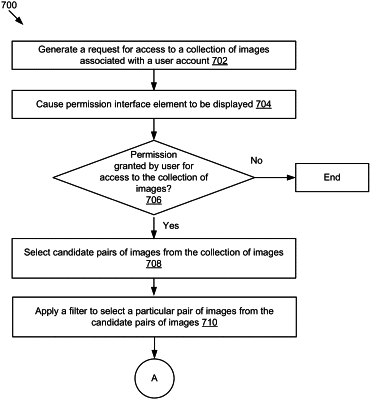| CPC G06F 16/739 (2019.01) [G06F 16/75 (2019.01); G06F 16/7867 (2019.01); G06N 20/00 (2019.01); G06T 7/20 (2013.01); H04N 5/2628 (2013.01)] | 30 Claims |

|
1. A computer-implemented method comprising:
selecting, from a collection of images associated with a user account, candidate pairs of images, wherein each pair includes a first static image and a second static image from the user account;
applying a filter to select a particular pair of images from the candidate pairs of images, wherein the filter includes a time filter that excludes the one or more of the candidate pairs of images when a time difference between respective timestamps associated with the first static image of the pair and the second static image of the pair is greater than a time threshold;
generating, using an image interpolator, one or more intermediate images based on the particular pair of images; and
generating a video that includes three or more frames arranged in a sequence, wherein a first frame of the sequence is the first static image, a last frame of the sequence is the second static image, and each of the one or more intermediate images is a corresponding intermediate frame of the sequence between the first frame and the last frame.
|